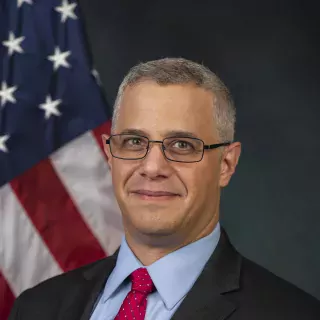Issue Summary
Changes in the American economy in the 21st century are affecting the U.S. workforce in significant ways, and in some cases reshaping the nature of work. For instance, advancements in artificial intelligence, robotics, and other new technologies are leading to increased automation and changes in work tasks. Also, employers are increasingly using digital surveillance tools to monitor workers, which could help improve operations but has led to concerns from worker advocates. There has also been an increase in nonstandard work arrangements. For example, there has been growth in the number of gig workers obtaining employment through online platforms, and employers are increasingly using temporary, part-time, or contracted workers. These nonstandard work arrangements may have implications for workers’ safety, wages, and access to benefits.
Camera Used to Digitally Monitor Workers
Image

In addition, telework, which became an important part of the response to the COVID-19 pandemic, has been reduced or eliminated in many workplaces as an increasing number of employers issue return-to-office orders. Potential benefits of telework include improvements in recruiting and retaining workers, but concerns remain about potential challenges—such as maintaining workplace culture. Although the pandemic has ended, it may have lasting effects on how and where work is done across the economy, as well as employer demand for workers with certain skills in some sectors—which may lead to some workers continuing to face long-term unemployment.
Sustained attention by federal agencies, including the Departments of Labor and Education, and coordination between federal, state, and local agencies is important for understanding and responding to this changing employment landscape and workforce needs. Additionally, where workers face disruptions or displacement, unemployment insurance, employment adjustment assistance, and other federal programs can provide critical support and protection—including getting workers proper training, such as apprenticeships, to meet the new needs of the changing economy.
However, federal agencies could improve how they provide such employment supports.
For instance:
- Ergonomic hazards for warehouse and delivery workers. In recent years, the most common occupational hazard for warehouse and delivery workers was overexertion, which can cause musculoskeletal disorders like tendonitis or back pain.However, the Occupational Safety and Health Administration (OSHA) faces challenges in identifying, assessing, and addressing ergonomic hazards. In FY 2024, OSHA implemented an inspection program to better protect warehouse and delivery workers. However, OSHA needs to improve its injury data, training, and guidance on ergonomic hazards, and evaluate the effectiveness of its new inspection program.
- Unemployment insurance. During the pandemic, tens of millions of workers relied on unemployment insurance to meet their urgent financial needs. However, this demand for benefits worsened existing problems in the unemployment insurance system, including delays and errors in benefit payments. It also strained outdated state IT systems. To ensure the unemployment insurance system—which has been on the High Risk List since 2022—is better prepared for future crises, the Department of Labor should continue to work on transformational changes to improve service to unemployed workers, align the system with the current workforce, and strengthen program integrity.
- Workforce development. The Departments of Labor and Education oversee 6 core workforce development programs that help job seekers find work and employers find qualified employees. The departments require the programs to submit data on their participants and have taken steps to help them do so. But the departments still don't have complete data on participants who are enrolled in multiple programs. For example, program data submitted to Labor did not include co-enrollment information on up to 67% of participants.


